A rubber fender is a shock absorber installed on a wharf to absorb the berthing energy of a vessel. Timber and old tires were used as shock absorbers until the first rubber fenders were developed in the 1950s. The concept of the role of rubber fenders in the berthing process is illustrated in Figure.

Here,
Eb :Effective berthing energy (kNm)
M : Mass of vessel (=Displacement tonnage: DT, t)
VB : Berthing velocity (m/s)
Ce : Eccentricity factor
Cm : Virtual mass factor
Cc : Berth configuration factor
Cs : Softness factor
As shown in above figure, the effective berthing energy Eb is the multiplication product of the normal kinetic energy of vessel: 1/2・M・VB 2 and the coefficients (Ce, Cm, Cc, and Cs), as defined in equation (above) in Chapter 5.
Furthermore, as shown inThe following figure the area between the reaction force curve and deflection amount in the x-axis corresponds to the amount of absorbed energy. Thus, for fenders, the absorbed energy EA must be equal to or more than the effective berthing energy Eb of the vessel.
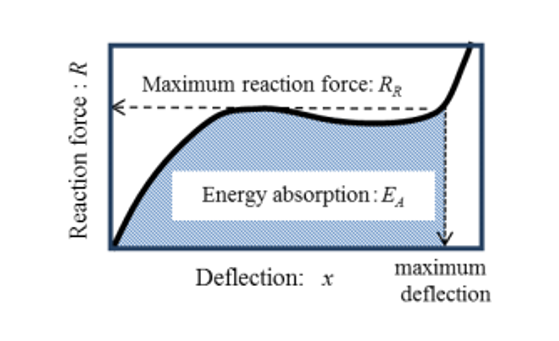
The reaction force R of a fender acts as a horizontal force on the wharf or on the side hull of the berthing vessel; thus,it is desirable that the reaction force is as small as possible. In contrast, a larger energy absorption EA is desirable.
The reaction force curve of the fender exhibits a high spring constant at the initial stage of compression and a constant portion later at higher deflection. Such characteristics are a result of the buckling deformation of the rubber fenders.
If the compression is within the maximum deflection, the reaction force is the maximum horizontal force to the wharf and vessel hull. This mechanism corresponds to the buckling-type performance.
By dividing the energy absorption EA by the maximum reaction force RR is known as the fender factor. In terms of fender design, maximizing the fender factor is considered essential to ensure efficient performance.
For the same type of rubber fenders, if performance fluctuations exist due to the design condition, the maximum reaction force and the maximum deflection in the design condition are considered to be the design reaction force and design deflection, respectively.
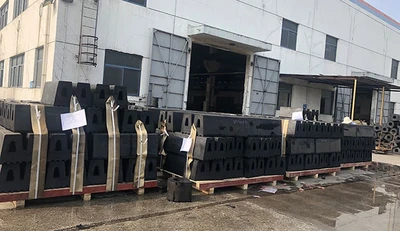 Co-vulcanisation and dispersion with rubber fendersDecember 16, 2024At the same vulcanisation speed, general purpose rubber is fastest with natural rubber, followed by isoprene rubber, butadiene rubber, latex polybutadiene rubber and styrene butadiene rubber. Slow vul...view
Co-vulcanisation and dispersion with rubber fendersDecember 16, 2024At the same vulcanisation speed, general purpose rubber is fastest with natural rubber, followed by isoprene rubber, butadiene rubber, latex polybutadiene rubber and styrene butadiene rubber. Slow vul...view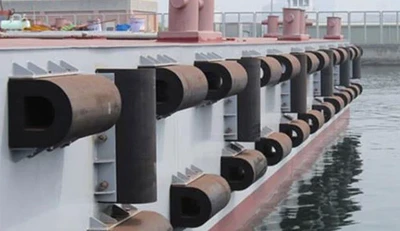 Cost strategy of marine rubber fenderDecember 16, 2024With the development of China's shipping industry, the demand for marine and terminal fenders continues to increase. Among them, marine rubber fenders are the most widely used for toughness and im...view
Cost strategy of marine rubber fenderDecember 16, 2024With the development of China's shipping industry, the demand for marine and terminal fenders continues to increase. Among them, marine rubber fenders are the most widely used for toughness and im...view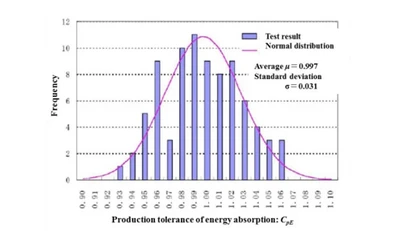 Performance of rubber fendersDecember 16, 2024In the design process, the performance of rubber fenders is considered in terms of deflection-reaction force characteristics in compression and the energy absorption calculated from these characterist...view
Performance of rubber fendersDecember 16, 2024In the design process, the performance of rubber fenders is considered in terms of deflection-reaction force characteristics in compression and the energy absorption calculated from these characterist...view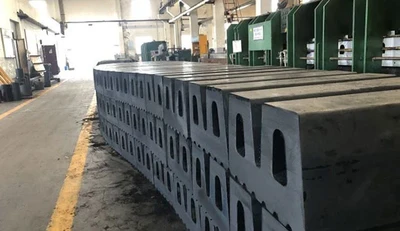 Requirements for the construction of rubber fendersDecember 16, 20241. All construction teams must follow the various management plans of the project department,comply with management,and achieve safe production and civilized construction.2. On-site construction worke...view
Requirements for the construction of rubber fendersDecember 16, 20241. All construction teams must follow the various management plans of the project department,comply with management,and achieve safe production and civilized construction.2. On-site construction worke...view